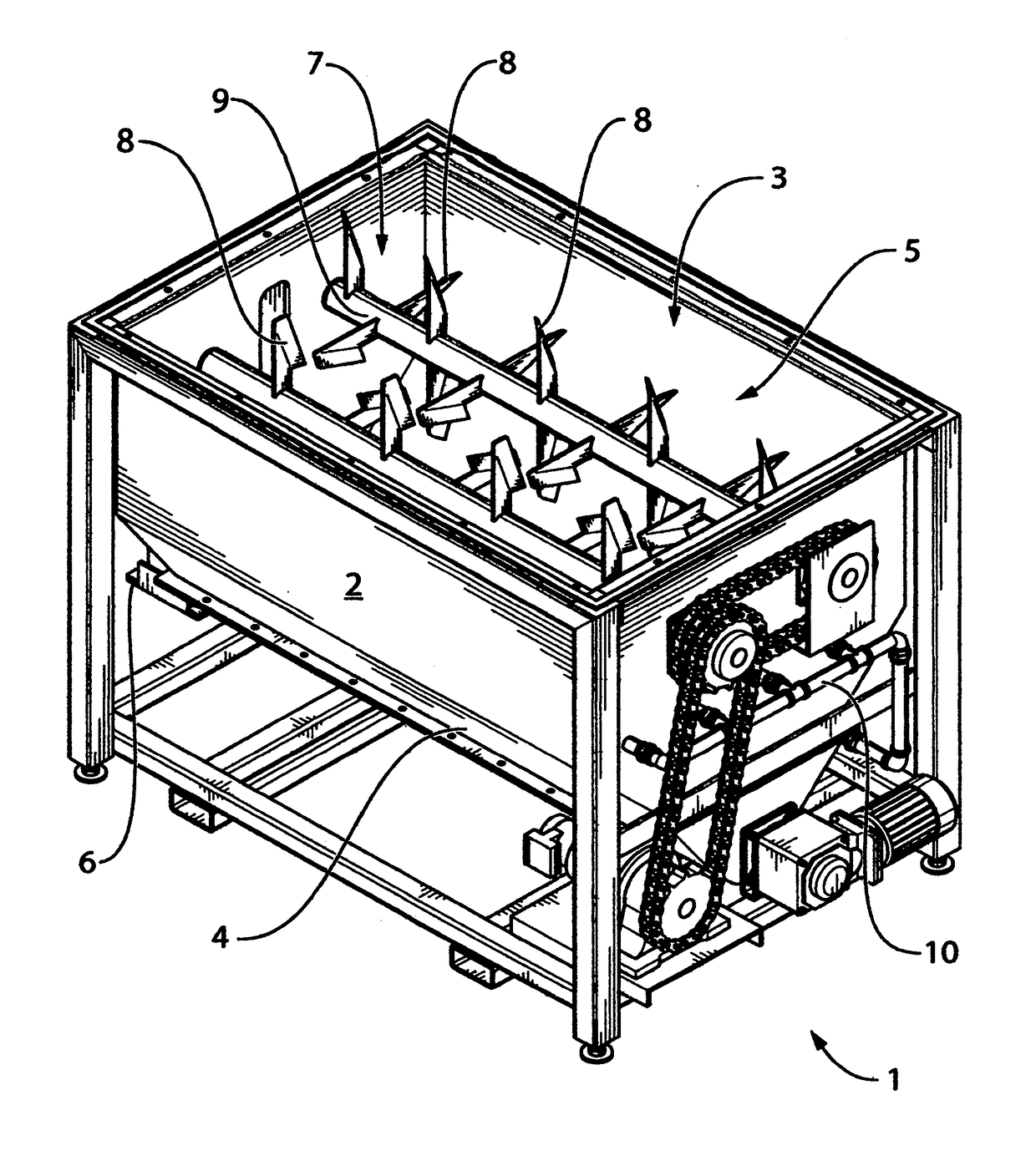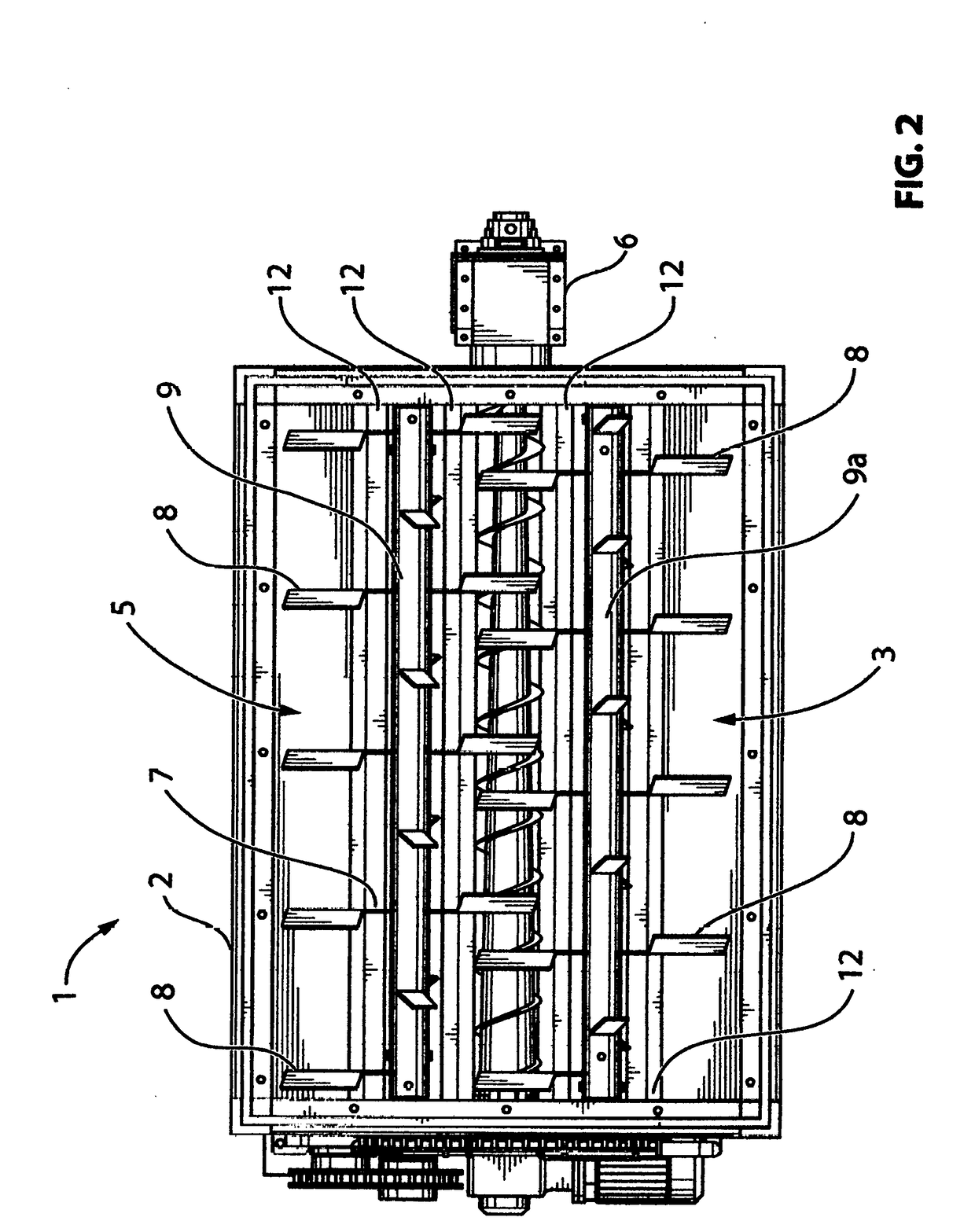Vermicast production through conversion of biodegradable organic matter
- Summary
- Abstract
- Description
- Claims
- Application Information
AI Technical Summary
Benefits of technology
Problems solved by technology
Method used
Image
Examples
Embodiment Construction
[0064]Referring now to the drawings in general there is provided a feed stock-to-vermicast converter 1, comprising an enclosed flow-through vessel 2 having an upstream inlet 3 for introducing convertible feed stock. The vessel 2 is of double-walled construction and adapted to include a closeable cover (not shown) for closing over inlet 3. Vessel 2 is constructed of welded stainless steel with a vee-shaped lower hopper 4. The void between the double walled construction of vessel 2 is insulated with polystyrene insulation to buffer temperature change and reduce the transfer of noise and vibration. The cover is also of stainless steel construction and includes provisions for safety interlocks and for automated feeding. Vessel 2 is supported on levelable feet with rubber pads to further reduce noise and vibration.
[0065]The feed stock material is introduced into a mixed epigeic bed conversion zone 5 adapted to accommodate a population of epigeic vermicast-producing worms. Zone 5 communic...
PUM
 Login to View More
Login to View More Abstract
Description
Claims
Application Information
 Login to View More
Login to View More - R&D
- Intellectual Property
- Life Sciences
- Materials
- Tech Scout
- Unparalleled Data Quality
- Higher Quality Content
- 60% Fewer Hallucinations
Browse by: Latest US Patents, China's latest patents, Technical Efficacy Thesaurus, Application Domain, Technology Topic, Popular Technical Reports.
© 2025 PatSnap. All rights reserved.Legal|Privacy policy|Modern Slavery Act Transparency Statement|Sitemap|About US| Contact US: help@patsnap.com



